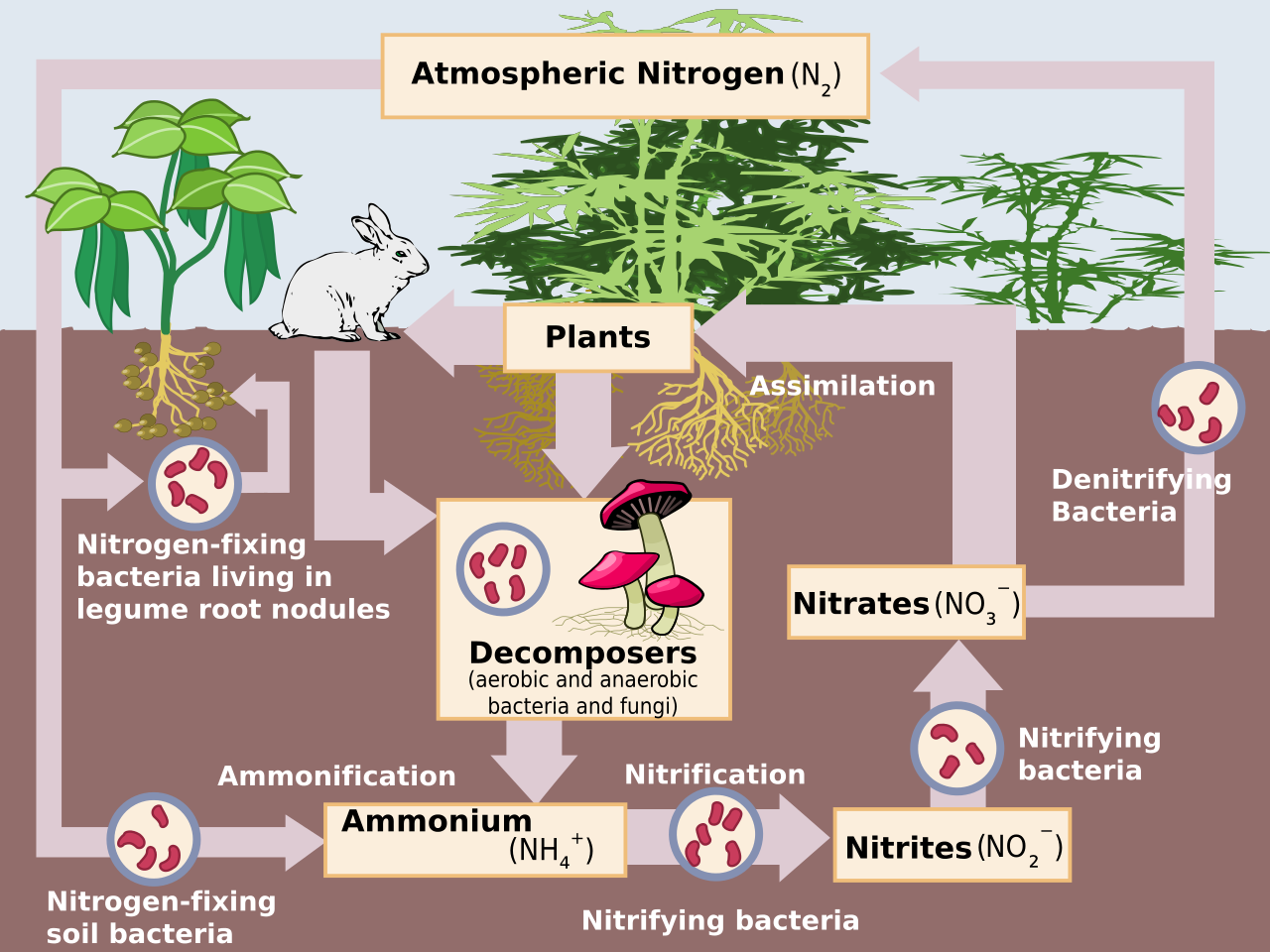| Introduction |
| Nitrogen is an
essential element for life on earth. When microbes consume organic
matter, which includes the nutrients they need, they create foods such as
nitrogen for the plants. Soil microbes including some types of bacteria
and blue-green algae can make the nitrogen available to plants by fixing
it from the air. Plants use the nitrogen for their growth and
developement. Lithotrophs, also known as chemoautotrophs, obtain its
energy from compounds of nitrogen instead of carbon compounds. Fixed
nitrogen from the soil air helps plants by dissolving soil minerals and
decomposing organic matter which allow roots to obtain key nutrients.
When plants grow, they use scarce nutrients such as nitrogen to make new
tissues. However, the majority of
nitrogen is found in the inert form of nitrogen gas. Most organisms
typically are not able to use this form of nitgogen as their primary
source and instead rely on the forms made accessible by numerous soil
microbes in a process known as the nitrogen cycle. The Nitrogen Cycle is the process by which the nitrogen forms Ammonia,
Nitrite, and Nitrate transform. Ammonia changes into Nitrite, which
changes into Nitrate. The figure to the right shows this process, along
with some of the other factors that affect it.
This cycle stays “healthy” in an environment when the levels of each
form show normal fluctuations (for example where there are high levels
of Nitrate Nitrogen, we should observe low levels of Ammonia and
Nitrite). Our research group investigated the Nitrogen levels in one of the research sites (site 4). For years, this site has had decreasing nitrogen levels. In 2015, however, these levels appeared to have "fixed" themselves. The nitrogen levels appear to be normal, meaning that there is a healthy Nitrogen Cycle. The only known change in the microclimate from last year to 2015 is the planting of three new types of trees in the area: Acer rubrum (red maple), Quercus alba (white oak), and Acer saccharum (sugar maple). Two of each kind of tree were planted and since research from the Ecological Society of America has shown that areas with large numbers of sugar maple trees tend to have soil with high levels of nitrification. Therefore, our research group hypothesized that the planting of the sugar maples are responsible for the "fixed" nitrogen levels. |

|